ECO Wind: Enabling Coexistence Options for Wind Energy and Wildlife
Through the Enabling Coexistence Options for Wind Energy and Wildlife (ECO Wind) program, NLR collaborates with technology providers to monitor wind-wildlife impact and develop strategies to enable more efficient and cost-effective wind energy projects.
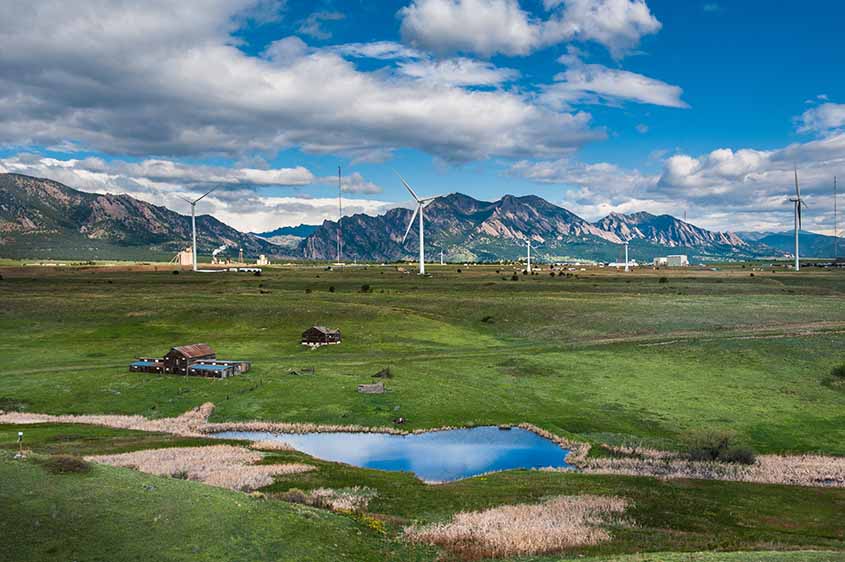
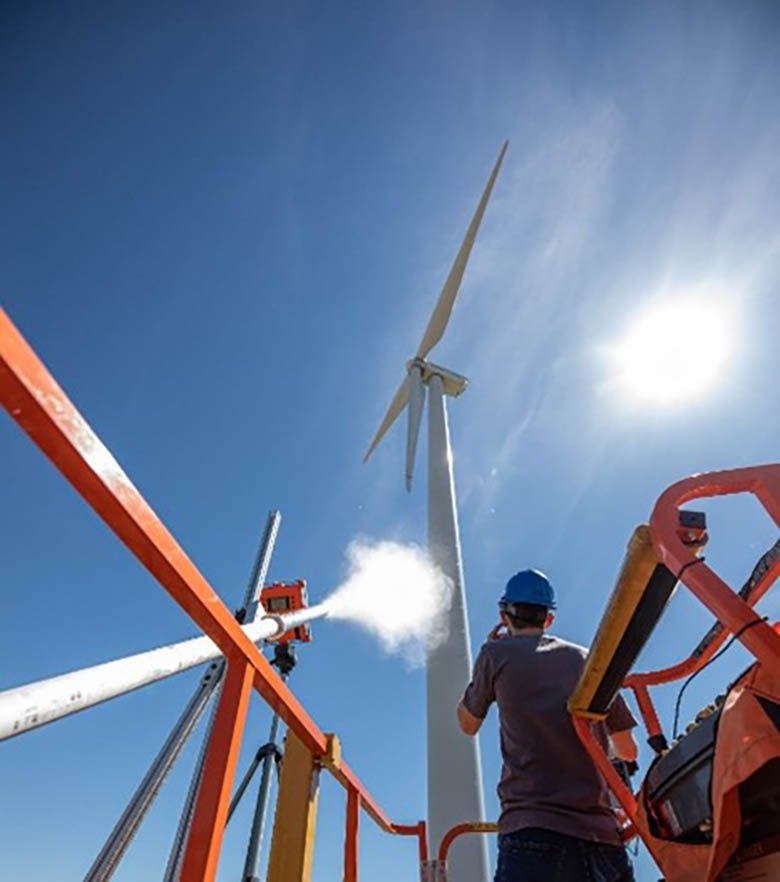
To validate collision sensor technologies, NLR developed a pneumatic launcher that fires projectiles of different sizes. The projectiles simulate collision events of small, medium, and large birds and bats. Photo by Werner Slocum, National Laboratory of the Rockies
Capabilities
NLR's specialized infrastructure and instrumentation are ideal for wind-wildlife impact monitoring and minimization technology research. NLR's Flatirons Campus, located south of Boulder, Colorado, offers utility-scale wind turbines and sitewide connectivity. Anemometers and four meteorological towers characterize atmospheric conditions (such as wind shear, turbulence, air density, stability, and flux) that affect turbine-wildlife interactions. To learn more about the weather conditions, see the current weather at NLR's Flatirons Campus.
In addition, NLR staff can create custom equipment for field validation studies, such as the pneumatic launcher, which researchers have used to validate collision sensor technologies. Learn more about NLR's wind energy research capabilities and facilities.
Projects
As part of ECO Wind, project partners can conduct field research with on-site support by NLR's experienced staff. Specialized state-of-the-art equipment provides industry partners with the technical support they need to take their innovation from theory to commercialization.
Learn more about NLR's environmental science research.
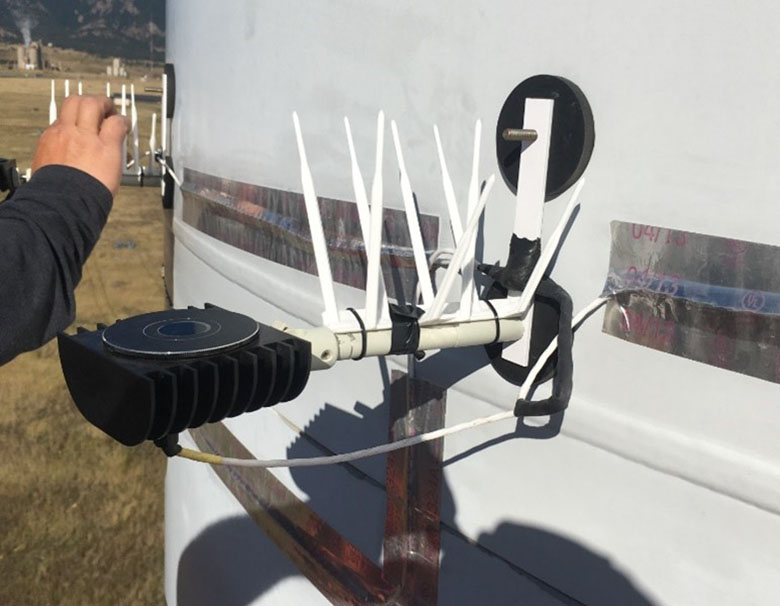
Illuminating Turbines With Dim Ultraviolet Light
Bats may mistake wind turbines as tree silhouettes at night and approach these machines in search of potential feeding and roosting opportunities. One project, led by U.S. Geological Survey research scientist Paul Cryan, explores whether illuminating turbines with dim ultraviolet light will prevent bats from approaching and being struck by moving blades.
Two utility-scale wind turbines at the Flatirons Campus were instrumented with 12 custom ultraviolet lights to test whether this method reduces bat activity near the turbines. Thermal video cameras monitoring bat, bird, and insect activity at the turbine tower and within the rotor-swept area provide the data to assess the safety and effectiveness of this system.
Results of the study were published in a special issue of the journal Animals.
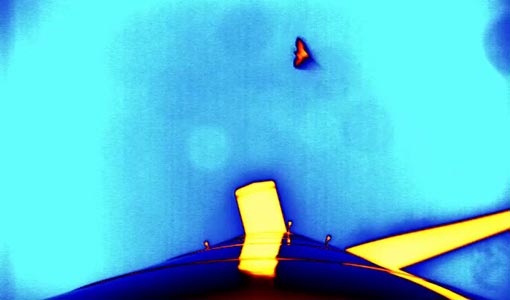
Bat Behavior Studies
NLR provided funding to three companies to investigate the behavior of bats around wind turbines.
The 2022–2024 studies—led by Bowman, Electric Power Research Institute, and Stantec Consulting Services Inc. and supported by the U.S. Department of Energy's Wind Energy Technologies Office—will provide data to help future improvements to minimize bats’ collision risk and improve coexistence of wind energy and wildlife.All three studies will use thermal imaging (pictured; image by John Yarbrough, NLR) among other devices, such as acoustic detectors, and tools, such as airflow models, to collect their results.
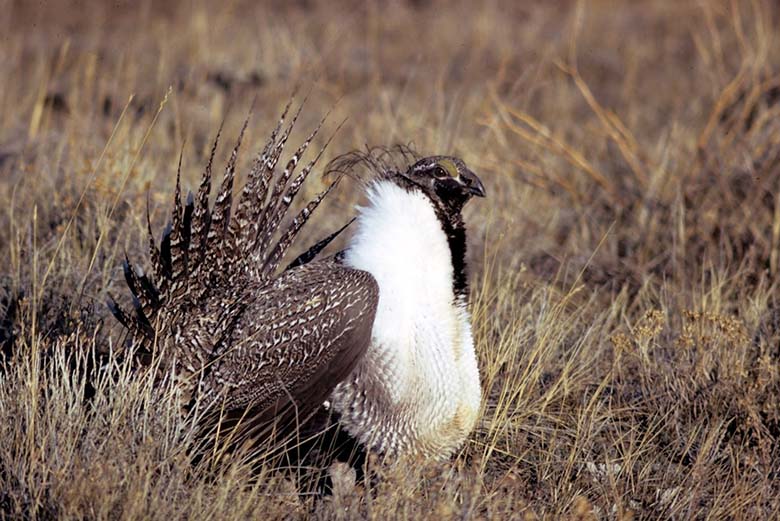
Conserving Grouse Species and Advancing Wind Deployment
Grouse populations benefit from large, intact, and undisturbed habitats; it is uncertain to what extent and magnitude wind energy development has an effect on grouse populations. In 2020, the ECO Wind team supported a meta-analysis of 10 studies of grouse behavior near wind turbines, finding that grouse habitat selection, survival, and courtship were all adversely impacted in habitats close to wind turbines. However, the magnitude of the effect was small and variable across studies. This analysis can help wind energy project developers make siting decisions that avoid, minimize, or mitigate impacts to grouse and their habitat.
The ECO Wind team also supported the Virtual Forum on Prairie Grouse and Wind Energy, which invited stakeholders to discuss research interests, challenges, solutions, and potential pathways for wind energy development to coexist with grouse in the grasslands and shrub-steppe of the central and western United States.
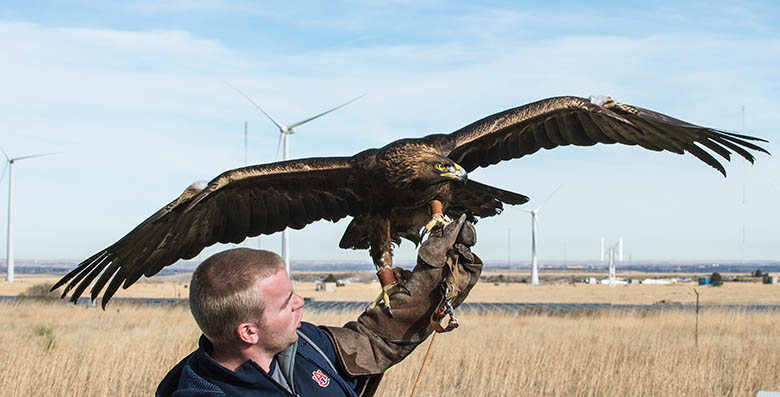
Modeling Eagle Flight Patterns
NLR scientists and fellow researchers at the U.S. Geological Survey, Western EcoSystems Technology Inc., and Conservation Science Global Inc., in partnership with Duke Energy and IdentiFlight International, are developing a computational framework for modeling golden eagle behavior near wind power plants. The team has focused its efforts on two regions in the United States and has begun validating the framework's behavioral component using flight data from eagles tagged with global positioning system devices. The team is using updated modeling to pair atmospheric data with golden eagle behavioral data and create a tool that predicts real-time flight paths (the Stochastic Soaring Raptor Simulator). By soliciting feedback on current and future capabilities of this tool, the team is ensuring the model can help guide wind power plant siting decisions and curtailment strategies.
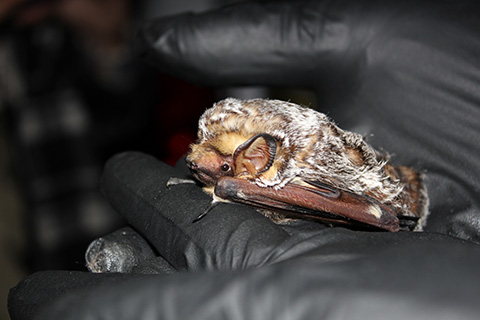
Founding and coordinating the Bats and Wind Energy Cooperative, which develops and disseminates solutions to meet conservation and renewable energy production goals, is part of NLR's long history of working to understand and resolve wind energy's impacts on species like this hoary bat. Photo by Cris Hein, National Laboratory of the Rockies
Engagement and Outreach
NLR considers engagement and outreach to be a vital part of ECO Wind and uses a variety of outlets to disseminate research findings.
For example, at the State of the Science and Technology for Minimizing Impacts to Bats from Wind Energy workshop, 73 experts discussed the status of current technologies, identified emerging technologies, and developed research priorities for minimizing bat interactions with wind turbines.
Wildlife and Wind Energy: Considerations for Monitoring and Managing Impacts, a nine-part webinar series created by NLR and Defenders of Wildlife, helped familiarize stakeholders with the nuances of land-based wind energy development in the context of species conservation.
NLR coordinates the Bats and Wind Energy Cooperative, an alliance of experts from government agencies, private industry, academic institutions, and nongovernmental organizations who develop and disseminate solutions to monitor and mitigate the impact of wind turbines on bats.
Publications
Visit the Tethys Knowledge Base for a comprehensive list of publications on wind energy and wildlife research.
Collaboration
NLR works closely with partners and stakeholders to identify priority issues and support research to advance monitoring and minimization practices. In addition to the work involved in ECO Wind, NLR is partnering with Pacific Northwest National Laboratory on the U.S. Offshore Wind Synthesis of Environmental Effects Research to assess interactions between offshore wind energy and wildlife.
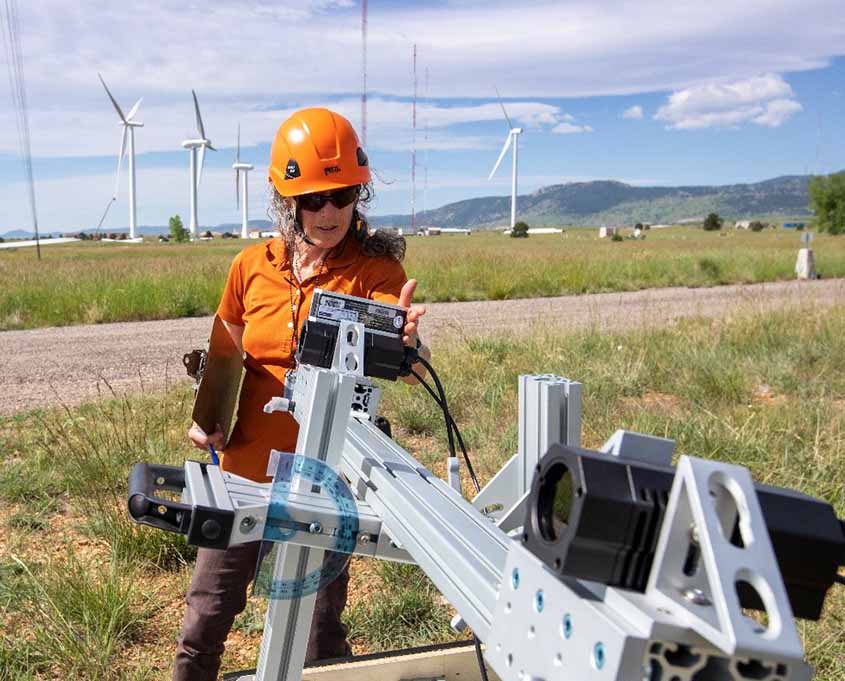
ECO Wind's key partners include:
- The American Clean Power Association
- Bat Conservation International
- Conservation Science Global
- Defenders of Wildlife
- Duke Energy Renewables
- Midé
- Pacific Northwest National Laboratory
- NextEra Energy Resources
- Renewable Energy Wildlife Institute
- Texas State University
- Texas Christian University
- Western EcoSystems Technology
- U.S. Fish and Wildlife Service
- U.S. Geological Survey.
Contact
Share
Last Updated Dec. 7, 2025
